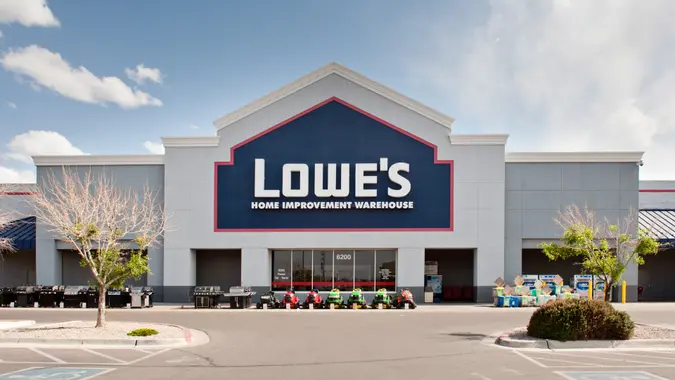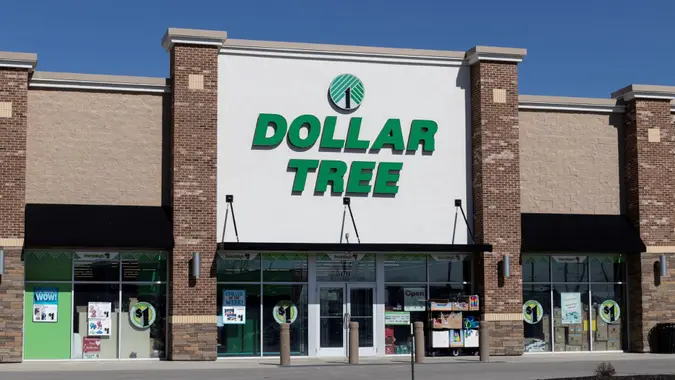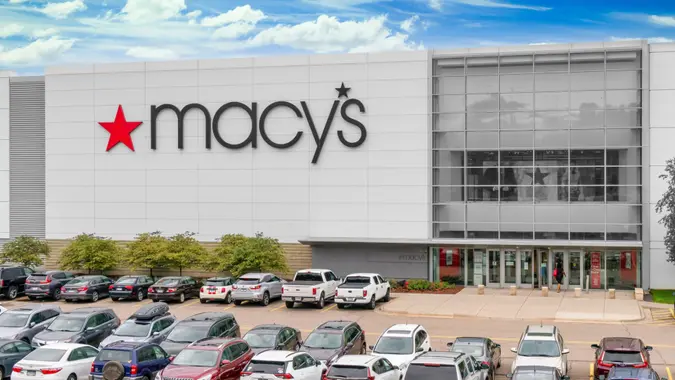I’m a Car Expert: 5 SUVs That Will Plummet in Value in Year 2

Commitment to Our Readers
GOBankingRates' editorial team is committed to bringing you unbiased reviews and information. We use data-driven methodologies to evaluate financial products and services - our reviews and ratings are not influenced by advertisers. You can read more about our editorial guidelines and our products and services review methodology.

20 Years
Helping You Live Richer

Reviewed
by Experts

Trusted by
Millions of Readers
Luxury and large SUVs often lose value fast in their second year, catching many buyers off guard and shrinking their resale options.
According to Lauren Fix of Car Coach Reports, new cars typically lose up to 30% of their value in their second year, which is around 16% in year one and 12% in year two. In contrast, luxury SUVs can lose 20% to 25% in the first year and 15% to 20% in the second, totaling 35% to 45% by year two.
Fix said this is particularly due to steep sticker prices and diminished demand in the used market. She explained that brands like BMW, Mercedes-Benz, Land Rover, Chevy, and Ford were experiencing the harshest depreciation. As such, these five SUVs will most likely plummet in value two years from now.
BMW
BMW’s SUVs are sought-after when new, but their two-year depreciation rate far exceeds the industry average, per Fix’s analysis. Edmunds data shows a 2024 BMW X5 now trades for $50,645 to $52,769, versus a typical MSRP above $66,000 — a value drop of roughly 25% in the first year alone.
“BMW luxury SUVs lose value especially fast due to pricey features and frequent model updates, making previous versions feel dated more quickly,” Fix explained.
In year two, depreciation accelerates; by the end of the second year, total losses often hit 40% depending on mileage and condition. For buyers hoping to retain value, Fix suggests considering less tech-heavy trims or exploring alternatives with stronger long-term demand, like a Lexus SUV instead.
Chevy Suburban
Chevy Suburban draws families for its size, but Edmunds shows it suffers strongly from oversupply-driven depreciation. Their value tracker records trade-in prices between $47,538 and $75,054 for 2024 models, down by roughly $8,664 from original values in the first year. Despite their popularity, sheer volume ensures that resale supply surpasses demand, causing sharp value cuts.
Another factor is operational cost, with Suburban owners facing expensive insurance, fuel and maintenance, reducing appeal for secondhand buyers.
“Mainstream large SUVs like the Suburban lose over 15% by year two, thanks to high fuel costs and market saturation,” Fix explained.
Even families who love its spacious layout may hesitate at used prices if a newer, discounted model can be bought instead.
Ford Expedition
The Ford Expedition sees similar struggles to the Suburban, suffering major second-year depreciation despite its popularity among families.
“Large SUVs like the Expedition are particularly vulnerable because of costly ownership and the oversupply sitting in dealership lots,” Fix explained. With consumer preferences gradually shifting toward crossovers, demand for used Expeditions has softened significantly.
Even though the Expedition remains capable and spacious, high operating costs erase much of its used-market desirability. Value-conscious families are more likely to seek smaller SUVs with better fuel economy and fewer ongoing expenses. According to iSeeCars, the Ford Expedition depreciates nearly 60% over five years, with roughly half of that lost in the first two years.
Mercedes-Benz
Like BMW, Mercedes-Benz SUVs depreciate steeply, with luxury trims hit hardest. Kelley Blue Book notes that a 2024 Mercedes-Benz Mercedes-AMG EQE SUV loses 39% of its value in the first year alone, dropping from $110,450 MSRP to a resale value of $66,921.
“High initial prices combined with expensive maintenance and new tech introductions make Mercedes SUVs a risky choice for value retention in year two,” Fix said.
Expect total depreciation to approach 40% within 24 months, especially for feature-packed or flagship models. While Mercedes is a dream brand to own for many, Fix suggests buyers budget carefully if they’re concerned about long-term resale.
Land Rover
Land Rover’s Range Rover is iconic, but among the worst offenders for second-year depreciation. CareEdge data reveals a new 2024 Range Rover priced at $197,470 sells for around $133,146 just one year later — a steep loss of over 32% in only twelve months.
“Expensive repairs and negative reliability perceptions create a double impact, with value dropping fast after the showroom glow fades,” Fix added.
Heavy use of cutting-edge technology also accelerates its decline, as buyers favor newer tech-loaded models instead of used ones. Reliability perceptions factor heavily here too, as critics often cite concerns about long-term durability affecting demand in the pre-owned marketplace.
More From GOBankingRates
 Written by
Written by  Edited by
Edited by 

























